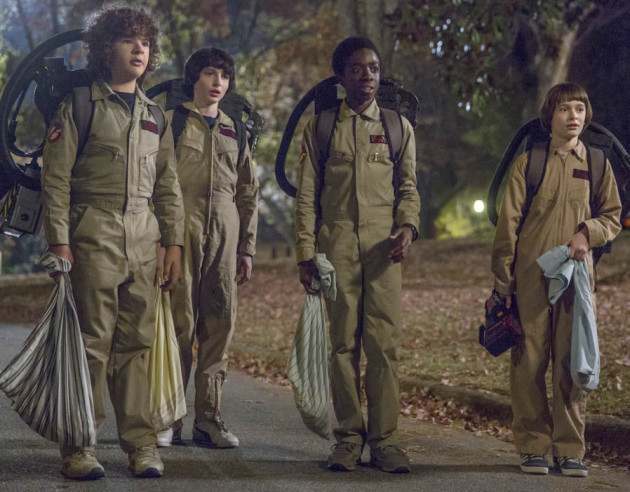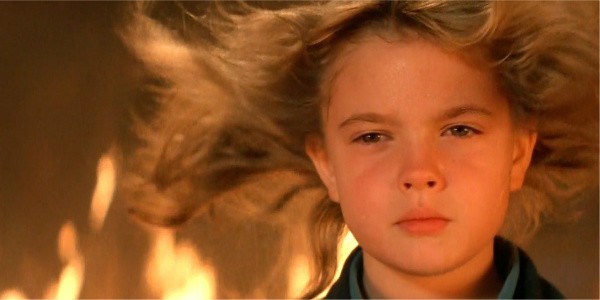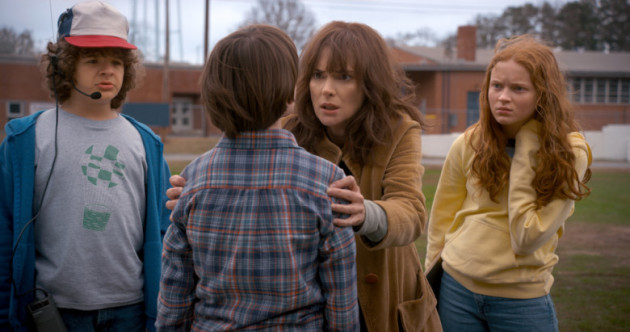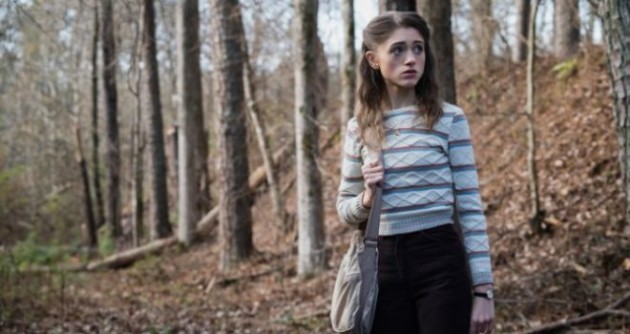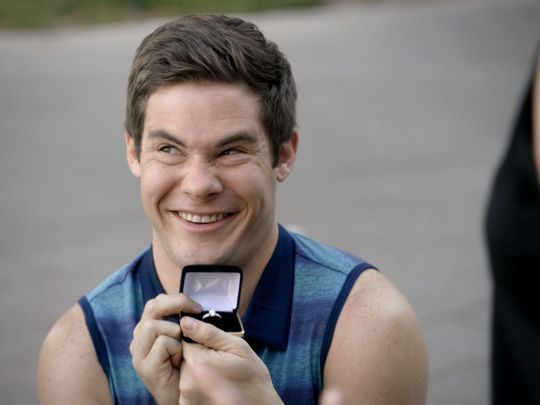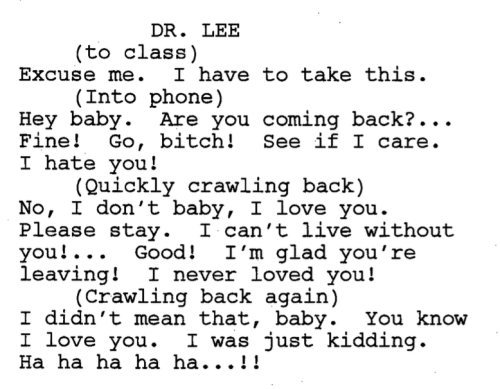Search Results for: 10 tips from

You may not like it. But box office is still the main criteria for determining whether people like a movie or not. WITH TWO CAVEATS.
RELATIVITY and EXPECTATION.
Each film’s success is based on the box office receipts relative to the production and marketing budgets. Also, each movie’s success is the final box office number contrasted against what the studio was expecting. This is why Star Wars: The Last Jedi has become the single most difficult movie to pinpoint as a success or failure in film history.
Upon first glance, the film is a juggernaut, taking in $575 million dollars domestically and 1.2 billion worldwide. But is that a success IN DISNEY’S EYES? Before the movie came out, I looked at The Force Awakens 930 million dollar domestic box office and Rogue One’s 530 million dollar domestic box office and said that Disney was probably hoping to AT LEAST split the difference between the two and hit 730 million. The Last Jedi isn’t going to make it that far and will be lucky to hit 630 million. Is that a success or is it a letdown? A cynicist would say it only made 100 million more than a Star Wars movie without a single known Star Wars character in it. An optimist would say that The Force Awakens was an outlier, an impossible to reach milestone, and that The Last Jedi held its own.
Something Disney wasn’t expecting was the out-of-nowhere success of Jumanji. And the reason that Jumanji being a hit, in particular, was a problem for Disney, was that it was aiming for the exact same demo Star Wars was. The reason Jumanji took such a big bite out of The Last Jedi’s numbers was one the pompous mouse house never could’ve predicted. Whereas The Last Jedi aimed to be a crowd pleaser, Jumanji ACTUALLY WAS a crowd-pleaser. And it used a little Scriptshadow trick to get there. What have I always told you guys? Write something that allows actors to play something that they never get to play and good actors will flock to your project. Once you’ve got good actors, you’ve got a shot at making something good. And the team up of The Rock, Kevin Hart, and Jack Black, all playing characters who are NOTHING like themselves, was too irresistible.
Jumanji has another thing going for it that some are arguing has reclaimed the trophy as the the premiere weapon in the battle for box office – word-of-mouth. If you get into a conversation with any random group of people who have seen these movies, you’ll find that both generate conversation. However, The Last Jedi conversation is more volatile. The people who hate it REALLY HATE IT. And so if you’re someone who was thinking about seeing the film, you’re probably leaving those conversations thinking, “Ehh, maybe I’ll wait for digital.” But everyone I’ve talked to who’s seen Jumanji has said, “I was surprised but it’s really good. It’s really funny.” You get nothing but good vibes leaving those conversations, which is why the film’s staying power is so high for a big performer (it’s racing towards $300 million at the moment). I LOVE the fact that word-of-mouth actually means something again because that means studios HAVE TO WRITE GOOD SCRIPTS. They can’t fake it. Anything that gives more power to the screenwriters in Hollywood, I’m all about.
Another film that embodies the power of word-of-mouth is The Greatest Showman. The film had the unfortunate challenge of marketing itself against the juggernaut that is Star Wars. A 250 million dollar marketing machine vs. a puny 40 million dollar campaign. Gee, I wonder who’s going to win the awareness battle there. When the film opened up on Christmas weekend, it made a paltry 8 million dollars and was immediately branded a bomb. Except something funny happened. People liked it. And they told other people that they liked it. And the following weekend, the film saw a 76% jump in ticket sales. And then this most recent weekend, it fell a paltry 11.3%. Usually when there’s blood in the water, a film dies out quickly. This one has not only survived, but thrived, and is currently up to 80 million bucks, off an 8 million dollar opening weekend! It was so off my radar that I didn’t even watch the trailer until I saw all this good box office news. And I loved it. It’s a very strong trailer and looks to be an awesome movie. It also follows two other Scriptshadow tips. First, write about an underdog. There’s nothing like a great underdog story. P.T. Barnum was a poor tailor’s boy before turning into a name everyone around the world still recognizes today. Also, whatever the trend is, find a fresh angle. These biopics have become a dime a dozen. So The Greatest Showman turned its biopic into a musical.
As we move into this new era where audience response is tracked via specific numerical data (as opposed to asking 20 first-weekend once-a-year moviegoers right after they see a film what grade they would give it), it will become more and more important for studios to GET THE SCREENPLAY RIGHT. And that doesn’t mean what you think it means. It doesn’t mean that studios will try to further course-correct their “blockbuster movie” mathematical formula. Quite the opposite actually. What they’ll find is that risk is a key component in driving audience reaction. And you see that with all three of the movies highlighted in today’s article. I don’t know anyone who was asking for a P.T. Barnum musical. That was a huge risk. I don’t know anybody who’d seen the original Jumanji and said, “Yeah, the reboot needs to be turned into a video game.” If anything, on the surface, that sounds like a horrible idea. And for all the crap I’ve given The Last Jedi, that film embodied storytelling risk. They were risks that failed. But you need studios willing to take those chances if you’re going to get those big surprise hits that get audience word-of-mouth going. And that’s great news for screenwriters and creativity in general.

We’re one day away from the opening of the new Star Wars movie and you know, I have to say, this Star Wars press junket is the best junket for any movie I can remember. A big reason for that is Mark Hamill. The guy’s so darned earnest. He’ll answer any question and he genuinely seems to be enjoying himself. You have to remember that Mark Hamill ran from this part for a long time. He wanted nothing to do with Luke Skywalker because he wanted a career as an actor and Luke was typecasting him. To see him embracing the character again is awesome.
Gwendolyn Christie is hilarious. John Boyega looks like he enjoys doing junkets more than shooting movies. Watching Laura Dern react to anything is as fun as watching kittens play. Kelly-Marie Tran still can’t believe she’s in a Star Wars movie. Even Rian Johnson, who looks a bit shy and reserved, is surprisingly forthright with information. JJ has a lot of charisma but he didn’t give you jack squat during the Force Awakens tour. If you ask Rian Johnson about Porgs, he’ll straight up tell you some of his cast hates them. Ask him about his new trilogy – something you’d think would be completely off limits – and he’ll tell you everything he’s got so far.
All of this has me rooting for the film, even though I’m tempering my expectations as much as possible. I honestly don’t think Johnson’s a good writer, guys. And these rumors about the over-the-top humor and some prequel-like moments has me worried. But hey, a man can only worry so much. It’s a new Star Wars film, baby. There’s reason to celebrate.
Which brings me to today’s topic. How can YOU write the next Star Wars? That zeitgeist-altering journey to another time and place that’s so magical and so affects its audiences, it becomes a part of their very being? It becomes an inspiration that affects their lives moving forward? Sound impossible? Eh, it’s not easy. But it can be done. And I’m here to tell you how to do it. Here are ten tips that will help you write the next Star Wars (or Harry Potter, or Lord of the Rings)…
1) DON’T WRITE THE NEXT STAR WARS – The trick to writing the next Star Wars is to not write the next Star Wars. Or Harry Potter. Or The Matrix. You see, one of the reasons Star Wars became Star Wars was because there was nothing else like it. The fact that it stood out so much from all the other offerings was a big reason for why it became so popular. In other words, don’t write a science fiction space-opera. Star Wars has that market cornered. Don’t write about kid magicians. That market’s been cornered. If your idea doesn’t surprise people, you haven’t written the next Star Wars.
2) COMBINE TWO THINGS THAT HAVEN’T BEEN COMBINED BEFORE – One of the tricks to creating something original is to take what we know and combine it with something we don’t expect. Star Wars took the world of science-fiction and said, “What if we combined this with the world of Westerns?” Harry Potter took magicians, who had been doing generic magic things for 300 years, and said, “What if we combined that with going to school?” It sounds easy but it’s true. And it’s fun. Just start plugging things together you don’t think go together and see if you come up with something cool. I’ll get you started. The story of King Arthur. What can you combine that with that we haven’t seen before? Give us your take in the Comments Section.
3) BUILD AN EXTENSIVE MYTHOLOGY – If there’s one commonality between Star Wars, Harry Potter and Lord of the Rings, it’s how elaborate and deep the mythology is. And that doesn’t come by accident. You have to do tons of backstory research into how this world came about, who’s involved, how it operates, the lineage of the characters, the lineage of the factions (Jedi, Elves, etc.) the lineage of the political climate. You often have to go back tens, even hundreds of years, to figure out how your world came together. Half-baked mythology leads to half-baked movies. So do your homework. Maybe don’t spend a year inventing a language like Tolkien did. But do your homework.
4) FOCUS ON THE STORY – Here’s where so many writers trying to write the next Star Wars screw it up. They create this mythology that’s so huge and so extensive and took so much time to come up with, that they want to show it off! So their movie becomes one big promotion for all the research they did. That’s not the point of creating a mythology. The point of creating a mythology is so you have the freedom to write a cool story within that universe. The mythology should exist in the background, only occasionally making its way into the story (“I fought with your father in the Clone Wars.”). This is one of the primary differences between Star Wars and The Phantom Menace. Star Wars was a relentless race to save the galaxy. The Phantom Menace was a show-off reel for all the political mythology Lucas constructed for the prequels.
5) AN UNDERDOG HERO WE CAN RELATE TO – When you write a protagonist into any script, but especially these types of scripts, you need to ask, “Is he relatable?” If you’re going to capture the imaginations of hundreds of millions of people, your main character has to be living a life that the vast majority of people feel like they’re living as well. To achieve this, anchor your story with an ordinary guy/gal. And to manipulate the audience into a little more sympathy, make that guy/gal an underdog. This is the formula for Luke Skywalker, Harry Potter, Frodo, and Neo.
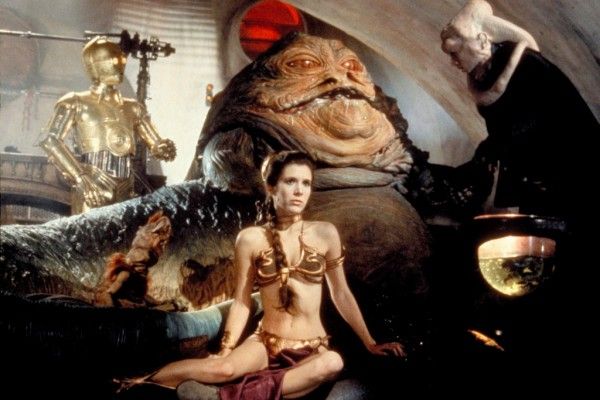
6) DRAW ON ARCHETYPES, THEN DESTROY THEM LIKE THE REBEL SCUM THEY ARE – Archetypes (the Hero, the Jester, the Sage, the Rebel) are your best friends when creating something for the masses. These are the types of characters audiences understand best. But remember, you’re not adapting The Hero’s Journey. You’re trying to create something fresh and different. That means for every archetype you embrace, you should destroy one. Luke is as archetypal as a hero can get. He’s a straight up everyday guy. Princess Leia, however, is nothing like the princesses we’ve come to know. She’s a get-your-hands-dirty fast-talking princess with an attitude. It’s how you play with archetypes that really sets your screenplay apart.
7) IT’S GOTTA BE PG OR PG-13 – If you want the most people possible falling in love with your story, you need the story to be accessible to children. Yes, you can write 50 Shades of Gray or Terminator. But something doesn’t truly tap into the zeitgeist unless you’re playing to the Age 5-25 demographic. This is your most impressionable audience. This is the audience who will most fervently champion your material. This doesn’t mean your writing shouldn’t have edge. Quite the contrary. It’s the “edge” that sets your material apart and makes that younger audience feel like they’re getting away with something. But if your material would clearly be rated R, it’s not the next Star Wars.
8) CHANGE WITH THE TIMES – If Lucas were writing Star Wars today, I’m pretty sure he’d be using the internet and social media in some for to do so. He would write an online graphic novel. Self-publish a novel. Drum up a kickstarter to shoot the trash compactor scene as proof-of-concept. We live in a different world than 1977 so the same rules don’t apply. A big part of Star Wars’s success was being on the cutting edge of so many ideas, taking chances in areas no one had taken chances in before. You must bring that same spirit to your own Star Wars. The rules are changing daily. Be creative and think outside the box to get your idea out there.
9) TAKE RISKS – If you want to create something as great as Star Wars, you have to be willing to take massive risks. The reason something takes over the zeitgeist is because it’s unlike anything that’s come before it. It’s new. Fresh. Different. Remember, before Star Wars premiered, Lucas’s friends were making fun of “the Force.” They thought it was weird and hokey. But that chance ended up paying off. The trick to taking chances is to ground those chances in your mythology. The Force was an integral part of Lucas’s world-building. It wasn’t like George said, “I have to take risks!” so he came up with something called the “KABLOWIE!” where every time Luke yells “Kablowie” everyone around him freezes. That’s not taking a risk. That’s stupid. The Force was existent in every corner of Lucas’s story, so when Obi-Wan or Luke used it, it made sense. But yeah, you have to take the kind of risks that are either going to result in Yoda or Jar-Jar. And the scary thing is, you won’t know until people see it. Gosh I love writing.
10) MAKE IT FUN! – I know this advice sounds obvious, but you’d be surprised at how few writers follow it. They want to write something that’s “Important” and shows what a “serious writer” they are. And look, I’m not not saying you can’t do that. But if you’re trying to write the next Star Wars or Harry Potter, the overall feeling of your story needs to be optimistic and fun. Not Blade Runner 2149.6.
Are the Duffer Brothers trolling Netflix and the rest of us?
I want you to put your Scriptshadow Imagination Cap on. Not the big one. Just the regular-sized one. This won’t require much of a leap. Got it on snug? Okay, I want you to visualize something for me. I want you to imagine a movie about four guys living in Los Angeles. Let’s call it: The Reservoir Club. Our main character – we’ll call him DAVE – likes this girl who works down at a 50s soda shop on the corner. Every weekend, the two compete in the shop’s dance competition. The place is called Dirty Mack Tim’s.
Dave’s roommate, JOHNNY, has had it rough. He lost his memory in a car accident. In fact. He can only remember things for 36 minutes at a time. So he’s started keeping tattoos on his body to remind him of the things he’s forgotten. NICK, who lives down the hall from the two, has this really fucking cool business idea. He wants to use human fat to create the single greatest shampoo in the world. He thinks it will make bank.
Oh, and let’s not forget LESTER. He’s a gimp. Walks funny. And the cops think he knows something about a recent murder. A gun-runner named Shawn Joze.
Now imagine if we lived in a world where all of this was packed into a single movie, and nobody actually complained that all of these things are giant plot points from famous 1990s movies, but rather they heaped praise on the film as a wonderful reminder of how good that period of movies was.
This is the dilemma I’m posed with when people ask me if I like Stranger Things.
Objectively speaking, the hit Netflix show does a lot of things right. The casting is top notch. The production value is great. The directing is strong. Even the writing is good. I particularly liked what they did with the plotting in the first season. They wrote 8 shows instead of the traditional streaming trend of 10. This allowed them to lay their season out like a feature screenplay, which has 8 sequences (2 in Act 1, 4 in Act 2, and 2 in Act 3). Episodes 1 and 2 became setup, Episodes 3-6 conflict, and Episodes 7 and 8 the resolution. And it works. The season never drags.
But, I mean, come on. Is there ANYTHING in this show that’s actually original?? Like even a single shot? Watching Stranger Things is like watching Steven Spielberg and Stephen King hang out and talk movies.
“Oh, that’s my shot from Close Encounters.” “Hey, they based 11 on Drew Barrymore from Firestarter. Neat!” “Didn’t I direct that exact same scene in E.T.” “Pretty sure there are about 50 scenes in here stolen from E.T. Steve old buddy.” “Cooool! Gremlins. But with a lizard!” “OMG, it’s literally like I’m rewatching Stand By Me.”
The other day, I saw an article titled, “11 Movies that Inspired Stranger Things.” I’m sorry. But if you have ELEVEN movies that inspired your movie/show, you’re doing something wrong. I don’t know about you guys. But when I release something, I want people saying, “I’ve never seen anything like this before.”
Still, the show is a hit. People love it. There’s no doubt about that. And that leads us to the question of the day: What can we learn from Stranger Things that can help us write our own hit TV show?
Well, each TV show is its own ecosystem. It’s a hit for its own reasons. But we may be able to steal a few tips from the show. I’m sure the Duffer Brothers won’t mind.
For starters, they integrated a conceptual trope that’s as rock solid as tropes get in hooking viewers – a missing kid or missing woman. There isn’t a person on this earth who doesn’t feel something when a helpless human being goes missing. So this usually gets people on board right away. At least for a couple of episodes.
That means you’ve got about 90 minutes to convince the viewers to stay with you once the missing person novelty wears off. Which means you have to use those 90 minutes judiciously. What should you focus on?
If you answered THE CHARACTERS you win a Scriptshadow cookie, which you can order with extra GSU if you so please.
Those 90 pages (or 2 episodes) need to be used to create AT LEAST half a dozen characters we fall in love with. Maybe because they’re brave. Maybe because they’re flawed. Maybe because they’re mysterious. Maybe because they’re funny. Maybe because they’re in love with a girl at school and we just HAVE to keep tuning in to see if they’re going to get her. Every time you create a character you should be asking yourself, “Why would an audience care about this person?” If you don’t have a good answer, keep working on that character.
Simultaneously, you should be establishing CONFLICT inside of the characters’ relationships. A mother and son who never get along. A sibling rivalry. Two girlfriends who both like the same guy. A marriage on the rocks. A patient (11) who’s sick of doing everything the scientist tells her to do. A military vet who doesn’t trust ANYONE in town. It doesn’t mean everyone should hate each other. Storytelling necessitates that some relationships start out strong. But if you aren’t exploring fractures in relationships, it’s one less reason for us to check back in.
To demonstrate the importance of this, think about an old friend you occasionally meet with. Imagine sitting down with that person over coffee and asking how things are going. “How’s your family?” “Great!” “How’s your work?” “Can’t complain. We just won a big case at the firm” “Last time we talked, you and your boyfriend were having trouble. How are you now?” “Oh, we’re wonderful. We communicate a lot better and I’ve learned to give him his space when he needs it, which has dissolved almost all the tension in our relationship.” And so on and so forth for 45 minutes.
How bored would you be in that conversation? Life is struggle. It’s conflict. It’s obstacles. Yes there are good times, but there are always tough times mixed in. Drama should be a reflection of that. If everybody’s happy with each other in your show, I guarantee you we’ll be bored as shit.
And remember not all conflict needs to be black and white. There just has to be an unresolved nature to it. One of the most-talked about characters in the first season of Stranger Things was Barb, the awkward best friend of Nancy Wheeler. When Nancy starts getting attention from popular bad boy, Steve Harrington, Barb tries to be supportive but senses that, if Nancy and Steve hit it off, her friendship with Nancy may be in danger. So Barb warns Nancy (“He just wants to have sex with you”) and attempts to guide her away from the “dangerous” Steve. But let’s be honest. It’s not that she feels Steve is dangerous. It’s that she feels she might lose her best friend.
As viewers, it’s in our nature to want to see conflict resolved. So we’ll stick around until that happens. As old conflicts get resolved, you’ll be weaving in new conflicts. And when those conflicts get resolved, you’ll be introducing new characters, which will allow you to create conflicts in new relationships (this is what they did this season with the red-haired girl and her Karate Kid villain brother).
However, while character and relationship conflict will be a major priority, you can’t completely abandon plot. Plot, you have to remember, GIVES YOUR CHARACTERS PURPOSE. A character who must figure out how to find a missing boy will always be more interesting than the same character who doesn’t have to do anything. So you’ve got to keep introducing new plot points to get your characters out there doing things.
Stranger Things does a pretty good job with this. For those of us who’ve seen all the 80s movies, these plot points may not be all that original. But to people who haven’t, they must seem beyond cool. Eleven is cool. The Upside-Down is cool. The secret lab stuff is cool. I’m not going to fault the Duffer Brothers for using old tricks on new dogs. I’ll never forget how devastated I was when I watched Escape from Alcatraz many years after seeing the mind-blowing Shawshank Redemption and realizing that Shawshank stole the “hide the tool in the bible” trick. The Duffer Brothers are just doing the same thing on a mass scale.
There are probably other things at play behind Stranger Things’ success. It was one of the first genre streaming projects to use the television format to create one giant movie. Imagine if Stephen Spielberg was able to make a 5 hour version of Close Encounters? I think that would’ve been pretty awesome.
Stranger Things is also distinctive in that it’s probably the most charming show I’ve seen all decade. There’s something so warm and cute about it that no matter how hard you try, you can’t stop smiling. And maybe that’s enough.
Genre: Sci-fi/Comedy
Premise: A couple of loser friends who love video games learn that they’re not only starring in one, but that they’re about to be turned off for good.
About: Today’s script comes from a couple of TV writers who teamed up to sell a spec to WB back in 2008. Danny Zuker would eventually become one of the main staff writers on Modern Family while co-writer Tim Kelleher would manage to get his spec “Grudge Match” through the system back in 2013.
Writers: Danny Zuker and Tim Kelleher
Details: 100 pages 9/20/2008 draft
No matter how many wrinkles Hollywood adds to its well-worn face, no matter how many trends come and go, no matter whether we’re in the Golden Era, Movie Star Era, or Franchise Era, there is one thing that will never go away. The cross-over pitch.
It’s so simple yet so powerful. In order to quickly describe your screenplay, you say it’s a cross between Great Movie A and Great Movie B, and people become instantly excited. It’s so effective that I fall for it every time. If you tell me your script is The Martian meets Silence of the Lambs, I’m going to want to read that!
So buckle my lips and frost my tips when I heard the crossover “Bill and Ted’s Excellent Adventure meets The Matrix.” I mean, like, come on. Is there a better pitch on the planet than that one? Unfortunately, Zuker and his writing partner sold this a couple of years before he hit it big with Modern Family, so the script was sort of forgotten.
Let’s unforget it.
20-something Todd spends most of his time in a virtual reality game with his virtual reality girlfriend, Atheena. But when Atheena dumps Todd by having sex with another avatar right in the middle of a virtual restaurant, Todd’s forced to reevaluate his life.
That may be difficult since his only friend, chubby stoner, Keesh, isn’t exactly winning at life either. The two of them go to the same community college in Tuscon, Arizona, where they try and make sense of their whacked out science professor’s (Dr. Lee) daily rants about quantum physics, most of which he seems to have picked up from Quantum Physics for Dummies.
When Keesh miraculously saves a beautiful girl from a falling beam at the mall, he begins an out-of-his-league romance for the ages. But when satellites start falling out of the sky and huge pits of lava begin opening up in the ground, it’s clear that the universe doesn’t agree with this hook-up.
Soon after, Todd is transported to Planet Doosh, where four Dooshans explain to him that his entire reality is a lie. He’s the only thing that’s real while everything he sees and everyone he knows is a simulation. He’s also told that if he doesn’t stop Keesh and Emma from having sex, that the simulated world he lives in will implode. It will literally be game over.
So back to earth Todd goes, where he’ll have to break the bad news to Keesh. But will Keesh believe him? And even if he does, will he care?
The crossover pitch here is pretty accurate, although I’d throw in two more elements. “Judd Apatow and Kevin Smith present Bill and Ted’s Excellent Adventure meets The Matrix.” If you’re a fan of any of these entities, there’s a good chance you’ll like this.
I enjoyed Control-Alt-Delete’s entire first act, especially the dialogue. Keesh was great, but my favorite was easily community college professor, Dr. Lee, who spends half the movie running around in a kimono. During the script’s first classroom scene, Dr. Lee stops teaching to take a phone call in front of everyone…
When all Kelleher and Zuker had to deal with was the interactions between the characters, everything about Control-Alt-Delete flowed and was hilarious. But once Todd gets called up to Doosh and the creators give him his goal to save the world, something about the script stopped working.
I occasionally see this happen in screenwriting, particularly in comedy scripts. When the writers are allowed to free-flow and have fun with the characters, the writing’s hilarious. But the second that big bad plot comes around (and by “plot” I mean the central goal, stakes, and time constraint), it destroys much of that freedom.
They so feel the need to keep the plot on track that the scenes become too tight, which is detrimental to comedy, where you need the freedom to play around in scenes. It’s all a balancing act, of course, and I see it happen the other way as well, where writers get TOO loosey-goosey in their scenes, to the point where it feels like the party ended 2 hours ago and they’re still looking for another beer.
You could argue Blade Runner 2049 did this – lingered in many of its scenes for too long. But Control-Alt-Delete definitely got less funny once the plot kicked in. And the solution to this is to remember that as long as the scene has a clear purpose, you can still have fun inside that scene. Comedy provides a little more leniency in that area than the other genres as long as you’re funny.
Speaking of the plot, I don’t think Kelleher and Zuker maximized its potential. Specifically, it was a curious choice to have Todd trying to stop his best friend as opposed to a proper villain. Todd had easy access to Keesh. Keesh is going to listen to whatever he has to say. Yeah, he’s got to convince Keesh not to have sex with the girl of his dreams. But this was a relatively easy task to save the world.
Look guys – what you’re always trying to do in screenwriting is make things as hard as possible for your hero. The goal should seem IMPOSSIBLE. Not kind of difficult. But impossible. And all the little tasks along the way should be hard as hell too.
There are some comedy writers out there who are anti-villain and I don’t get it. I think that’s beyond stupid. Villains often become some of the most memorable characters in comedies. That’s because comedy is one of the few genres where you can actually play around with and have fun with the villains. You’re not restricted to just writing a really mean guy. Mugatu, Vizzini, Shooter McGavin, Lumbergh, Principle Rooney. Imagine all those classic movies without those characters. Going without a villain in your comedy is like choosing not to add cheese to pizza. It’s bizarre logic.
The sci-fi comedy genre has lost its way. Its golden age was the 80s. Since then, nobody knows how to write it anymore. It requires not only an understanding of science-fiction and comedy, but also just the right dose of cheesiness. I’ve also found that people who write in this genre write sloppily. They have this attitude that as long as the script approximates what it’s setting out to do, that’s good enough. I’m sorry but that’s not good enough. If you love this genre, like I do, you should strive for greatness. The last 40 pages of this script are messier than a hoarder’s kitchen. And that’s too bad. Because I thought this script had a lot of potential.
Script link: Control-Alt-Delete
[ ] What the hell did I just read?
[x] wasn’t for me
[ ] worth the read
[ ] impressive
[ ] genius
What I learned: Usually, when I randomly ask someone what their script is about, they’ll start talking, and explaining, and back-tracking to remind me of something, before asking me where they left off, before repeating some stuff, before continuing to explain. It can get bad fast. If you’re not ready to pitch your entire idea, have a one-sentence synopsis and a 2-movie crossover pitch ready to go instead. So, for example, with Edge of Tomorrow, you’d say, “It’s about a guy who gets stuck in a time loop fending off the same alien invasion over and over again. It’s Groundhog Day meets War of the Worlds.”
So I got to thinking after Monday’s post. Because people wanted me to expand on the topic – How to break in. And I’ve spent the last two hours, sitting in this chair, staring at the wall, thinking about that and only that, looking for that kernel, that ONE MAGICAL MORSEL, that could somehow distill this answer down into a single actionable piece of advice. “JUST DO THIS AND YOU’LL BECOME A PROFESSIONAL SCREENWRITER” was the goal.
Needless to say, that was a failed experiment.
Sort of.
Whenever I thought I’d come up with something, I’d realize, “But they still need to put 7500 to 10,000 hours of work into learning how to write.” There was no way around that. And I think that’s the part no new screenwriter wants to hear. Or, it’s not so much they don’t want to hear it. It’s that they’re looking for a shortcut, a way to shave off a thousand hours here or a thousand hours there. I suppose that’s possible if you’re one of the lucky ones – a writer with innate talent. But, baseline, we’re talking about 5000 hours AT LEAST before you’re ready.
Assuming you’ve put in that time, there’s ONE THING I’ve found is the closest you’re going to get to a single “Holy Grail” piece of actionable advice on how to break in. And I figured it out by going in the opposite direction. I asked myself, “Okay Carson, what is the WORST thing a screenwriter could do? The one thing that would ensure failure?”
And the answer to that was easy: A bad idea.
The most common problem I see in amateur screenwriting is BAD SCRIPT IDEAS. I read so many submission e-mails where I literally close my eyes, slowly shake my head, and think, “What is this person thinking??” I know, just by looking at that logline, that the script has ZERO CHANCE of being good. Not even .00001%. Zero. And it’s sad. Because even if they’re a good screenwriter, they’re working with a faulty premise. There’s no strange attractor, no clear sense of conflict, no irony, no clear goal, no imagination, no clarity. The idea is just HORRIBLE.
Horrible idea generation tends to break down into two types. The beginner screenwriter who doesn’t yet know what constitutes a good idea. And then the more frustrating scenario – a writer who simply doesn’t realize his idea is bad. This usually happens because a) he doesn’t ask anybody whether his idea is good or b) nobody tells him his idea is bad. And “b” is, unfortunately, a common scenario. Nobody wants to be the asshole. Nobody wants to destroy the writer’s enthusiasm. What they don’t realize is that by not being truthful, they’re sending that writer on a one-year journey of misery where they’ll be turned down again and again, because people either won’t like the idea enough to read it, or the ones who do read it, will hate it because the idea was faulty in the first place.
This is why I encourage people to send me their loglines. I rate them 1-10. If it’s below a 7, I tell them not to write it. And if you don’t have $25, find a friend who knows screenwriting and ask them to do the same. Make sure you preface it with, “Please please please be honest. Tell me if it sucks.”
This indirectly leads us to our Holy Grail answer. The one thing that gives us the BEST CHANCE at breaking in is… A GOOD IDEA!!!
That’s all it takes to open all the doors, to line up all the agents, to get the studios bidding. Ehh, not exactly. But what a good idea does do is it INCREASES YOUR CHANCES AT SUCCESS EXPONENTIALLY. Everyone will at least open your script if it’s a good idea. And since Hollywood is a numbers game, the more reads you get, the better the chance you’ll finally get that “yes.”
All of this begs the question: What is a good idea, Carson?
Look, if I had a bunch of great script ideas, I wouldn’t be posting them here for you guys. I’d be writing them or hiring other writers to write them. A great script idea is no different from a great song hook. You don’t know if it’s going to catch unless you put it out there and see what people think. The advantage YOU have is that it only takes minutes to come up with an idea. And it only takes minutes to send that idea off and get someone’s opinion. So there’s power in that. You can send a lot of ideas out there with very little time wasted. That’s preferable to wasting an entire year of your life on a script only to learn afterwards that the idea sucked.
Or you know what’s worse than that? Is writers who don’t even realize that that’s the reason their script failed. They might assume they’re just bad writers and quit. But had they been working with a GOOD premise instead of a BAD one, everything about their writing would’ve been better. I’ll give you a real-world example of this. Dan Gilroy, who wrote one of my favorite scripts, Nightcrawler – great character, unique premise – also wrote a new Denzel movie, Roman J Israel, Esq. Awful premise. Confused concept. Bad script. From everyone I’ve heard who saw the movie – they say it’s bad. That bad idea turned Gilroy into a bad writer for one script. That’s how important concept is.
Cause I don’t want to leave you guys out in the dark. Here are the last three articles I wrote about how to come up with a good script idea. Read them. Embrace them. Make the most of them.
The Secret To Better Movie Ideas
The Power of Reinventing Ideas
Ten Tips to Come Up With Better Movie Ideas
But the main thing is GET FEEDBACK on your idea. Hell, you have one of the best screenwriting networks on the web right here at Scriptshadow. Take advantage of it! Tell people to be “brutally honest” when assessing your idea. Because if you’re SUPER DUPER EXCITED and tell them, “This is my best idea ever,” before asking their opinion, they’re going to lie to you. They don’t want to rain on your parade.
Good luck!
Carson does feature screenplay consultations, TV Pilot Consultations, and logline consultations. Logline consultations go for $25 a piece or 5 for $75. You get a 1-10 rating, a 200-word evaluation, and a rewrite of the logline. All logline consultations come with an 8 hour turnaround. If you’re interested in any sort of consultation package, e-mail Carsonreeves1@gmail.com with the subject line: CONSULTATION. Don’t start writing a script or sending a script out blind. Let Scriptshadow help you get it in shape first!

